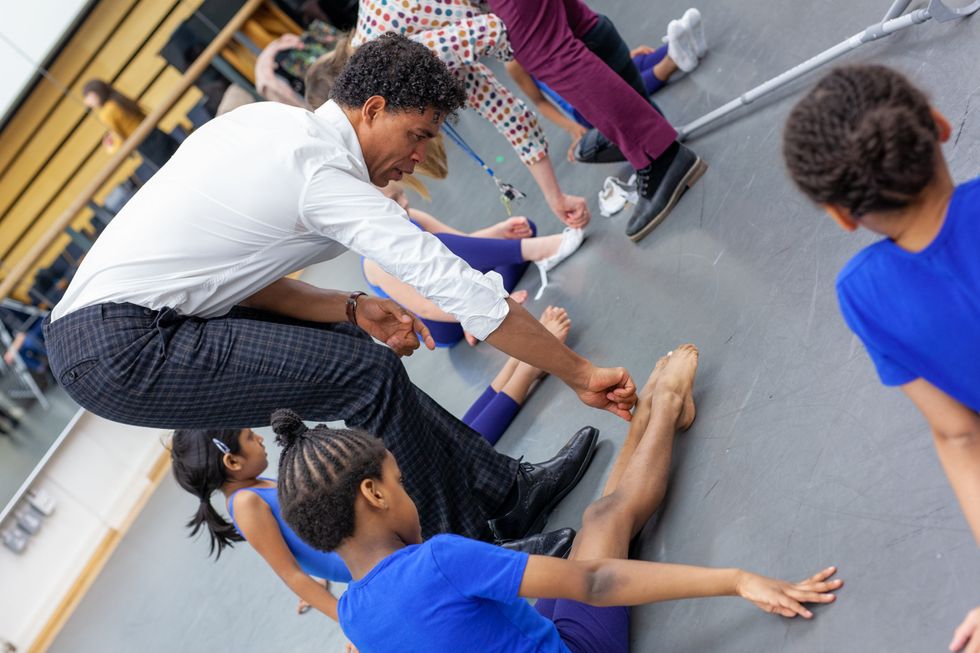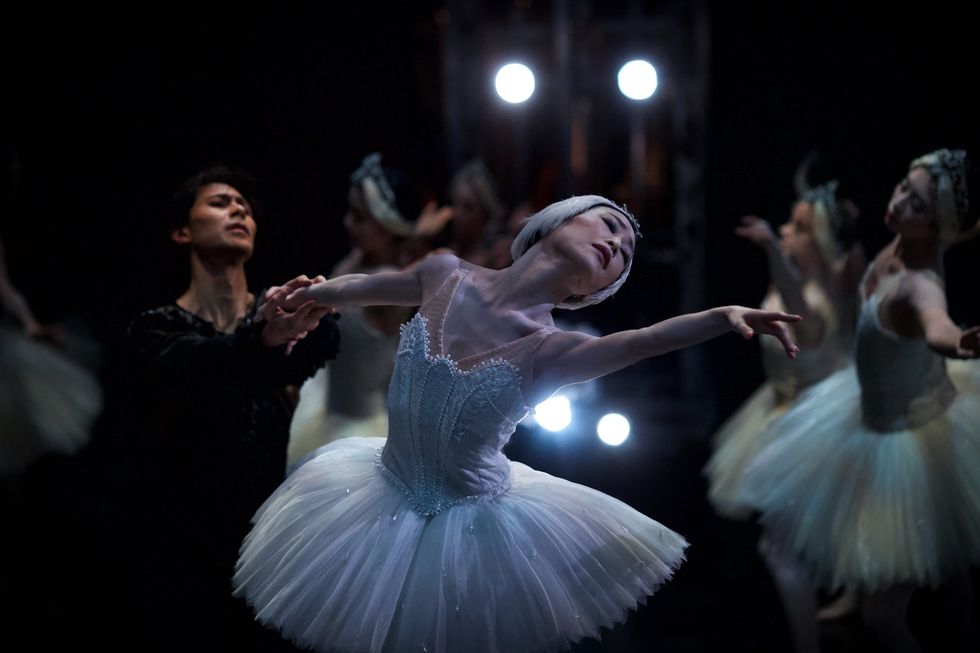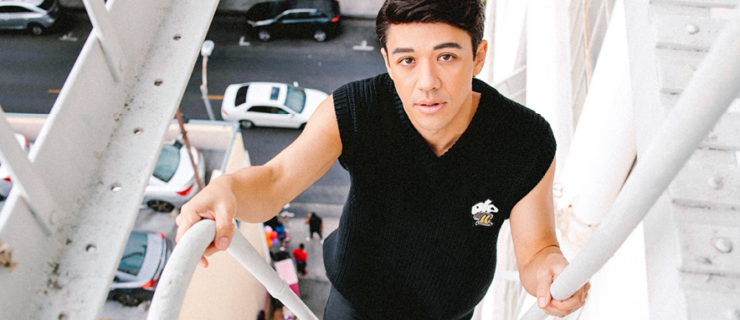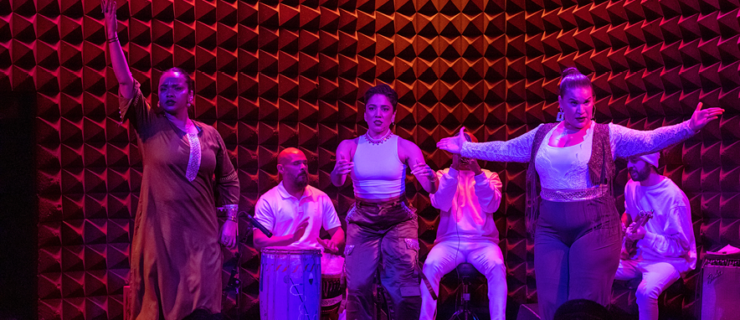Carlos Acosta Is Shaking Up Ballet’s Traditions
It was clear from the moment Carlos Acosta accepted the directorship of Birmingham Royal Ballet that he would break the traditional mold of artistic director. In announcing his new position, he shared that he would not step down from his own company, Acosta Danza, or its academy, which he founded in Cuba in 2015 and 2017, respectively. The question on everyone’s mind was, How will he direct two companies that are 4,570 miles apart?
The short answer: technology. Acosta, now based primarily in Birmingham, corresponds with Acosta Danza via texts, video conferences, recorded clips and Skyped rehearsals. He’s set up two teams—one to handle managerial responsibilities and one, led by Yaday Ponce, to oversee all artistic tasks. “She runs everything with my supervision,” he says. “We have a WhatsApp group. I read everything. I keep up to date with the movements in Cuba, and give my feedback.”
It’s a daring move. But as one of the premier male ballet dancers of his time, Acosta has spent his career breaking the status quo. And in appointing him as the new artistic director of Birmingham Royal Ballet, the 74-year-old company has signified that it’s ready for a bold change.
“BRB is a big institution. It has great tradition,” says Acosta. “Now it’s time to explore the direction it should take to be more representative of the times we are living in.”

Jayme Thornton
Today, ballet is perched on the precipice of a major cultural shift as it is forced to address inherent dysfunctions, like its lack of diversity. Concerns for the preservation of “tradition” run high among some in the old guard, even while many recognize that if ballet does not embrace change, relevance is impossible.
Acosta, who embodies the dichotomy of the ballet industry’s current position, might be one of the few people trusted to test the traditions. The 2018 biographical film Yuli recounts his journey from humble beginnings in Havana: Accepted into Cuba’s deeply traditional National Dance School, he started reluctantly, but quickly realized that ballet was an opportunity to change his life. “It wasn’t about a job; it was about a necessity, about existing and being alive,” he says. “I needed to use my art to show to the world that I could be somebody.”
After making his mark in ballet competitions (taking gold at the Prix de Lausanne in 1990), he joined the English National Ballet. But it was his time with Houston Ballet (1993 to ’98) under artistic director Ben Stevenson, who created career-defining roles for him and Lauren Anderson, that made him a sought-after guest artist. After joining The Royal Ballet, he got a taste of choreographing, re-creating classics like Don Quixote and a one-act Carmen.
Birmingham Royal Ballet is the sister of The Royal Ballet, both daughters of Dame Ninette de Valois. They began as one troupe at Sadler’s Wells Theatre. When the company was invited to take up residence at the Royal Opera House in the 1946, de Valois, wanting to have dancers in both theaters, started a second arm. It eventually became a touring troupe, until 1990, when it put down roots in Birmingham.
For the past 25 years, under former BRB director David Bintley, the sisters have been estranged. Unsurprisingly, this is something that Acosta is eager to repair. He would like to have an exchange where each performs in the other’s theater. He envisions possibly co-producing ballets. “Both companies will have completely different artistic identities. But I think it would be great for every now and then to come up with programs that celebrate The Royal Ballet brand.”

Acosta working with students in Dance Track, BRB’s youth program.
Man Yee Lee, Courtesy BRB
He believes the company can at once present canonic classical repertory and herald the avant-garde, and do both at the highest level. His first programmatic offering includes a premiere by Brazilian-British choreographer Daniela Cardim, Balanchine’s tried-and-true Theme and Variations and a new duet by Acosta Danza resident choreographer Goyo Montero—for which Acosta will don his dance togs again to partner Alessandra Ferri.
One gets a sense that Birmingham Royal Ballet will be molded not only in Acosta’s aesthetic and standards, but in the shape of his heart. He has thoughts of presenting a triple bill entitled “Africa.” “About Africa: past, present and future,” he says. “It should feel like a full-length and talk about Africa as the cradle of civilization.” (Imagine an evening at the ballet that spans ancient Kush to Black Panther.)
As Acosta sees it, his chief responsibility is to make BRB one of the leading ballet companies in the world. That means elevating the classical works the company is known for, commissioning cutting-edge choreographers and developing innovative ways to present ballet that will attract and intrigue and break stereotypes.
“I want to bring art out of its context every so often,” he says. “It shouldn’t be all closed-door; we can stage it in the park for everyone to see. I’m very up for site-specific choreographies, going to a warehouse and staging a show there, or having Swan Lake in the canal.”
Acosta’s vision is simultaneously radical and timely. As one of the few black artistic directors of a ballet company, Acosta is part of a super minority. And when Acosta says things like, “I want a company that’s not predictable—when you become predictable it becomes boring, it becomes monotonous,” it can sound like heresy to traditionalists who see the foundation of ballet rooted in its “predictability.”
Ballet as a form is undeniably elitist. However, Acosta is not. His point of entry has given him a different lens through which he views the form. Although he holds the highest of standards for ballet, he sees it as a dance of the people. “I want people to dance ballet as something that communities do. You can just dance, not as a professional, but it’s something that motivates you, that’s good for your body, so that you can be in touch with music,” he says.
Since more than 40 percent of Birmingham residents are nonwhite, Acosta wants to create a company that is a reflection of the community BRB represents, in the dancers and the stories they tell. There is a ballet in the pipeline that will capture the stories of residents in the community.
But “Brummies” won’t have to wait to participate. BRB’s Dreams project is a program for dancers age 8 and up who attend local ballet schools. Participants have the opportunity to train and work alongside the company, culminating in a full-scale performance of Swan Lake with BRB dancers in the main roles. The first two iterations debuted in February in Southampton and Birmingham, with auditions in each region to hire local cast members.

BRB’s Momoko Hirata and César Morales in
Swan Lake @dancers_eye, Courtesy BRB
Leadership transitions can create tumult in companies as everyone gets to learn one another. When asked how the dancers are feeling, Acosta says, “I think they’re very excited. They’re ready for corrections, for embracing new ballets. I’m bringing in new choreographers that have never been seen in the UK—from Slovenia to Brazil. It will make a repertory that is more eclectic and diverse.”
The dancers also know that his star power brings a spotlight: In addition to other tours, the company will have a homecoming of sorts when it returns to perform in the Royal Opera House next summer.
One of the things Acosta wants to pass on is his indefatigable work ethic, and he does so by modeling. He takes class with the company. They see him sweat and struggle, and although he’s turning 47 this month, he is among the last to leave the studio.
He worries about the digital noise, like social media and internet stardom, that can make it hard to concentrate. So he has charged his principal dancers with the responsibility of leading by example. “I expect for my principal dancers to lead not just by their level technically and artistically, but how they behave, being someone who’s always working. Not on their mobile phone.”
Although running two companies simultaneously might sound impossible, Acosta is no stranger to hard work. “There were no Saturdays and Sundays,” he recalls of the early days of his training. “It’s about an attitude about life, an attitude towards your commitment to this art.”
Before ballet claimed him, he was just another kid breakdancing in the streets of Havana, and he has held on to his hip-hop heart, and that “can’t stop, won’t stop” philosophy. As a black man in ballet who has reached its pinnacle, Carlos Acosta is accustomed to working twice as hard and being twice as good. This has made him twice the man. So when it comes to running two companies in two countries, he might be just the guy for the job.




